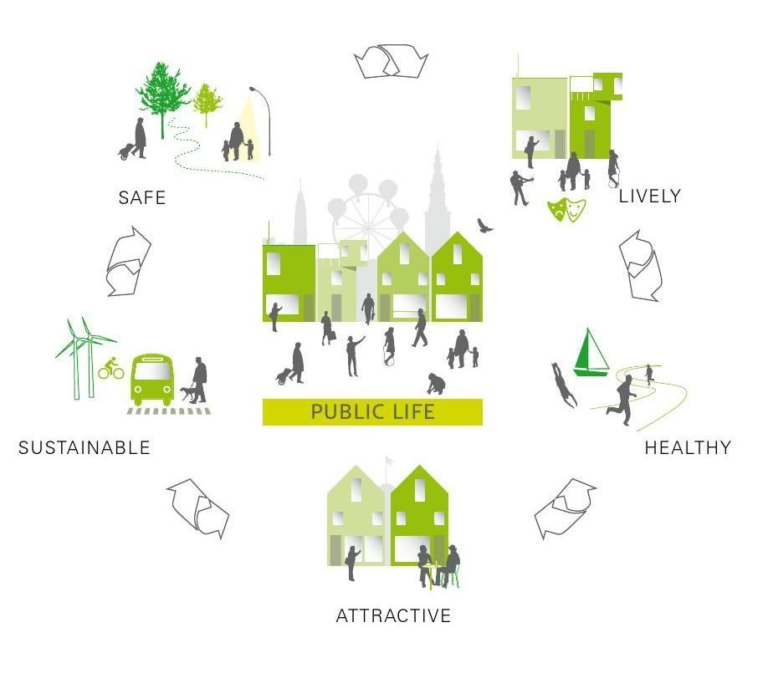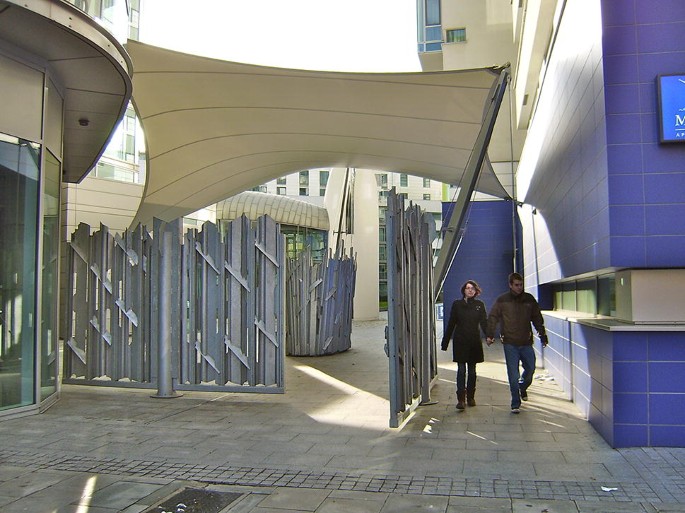In addition to addressing the design principles and factors, the material you have provided highlights the significance of public spaces in urban life. The idea of ” Life Space Building” highlight the significance of developing surroundings that promote and improve human well-being. This method acknowledges the relationship between social interactions, psychological experiences , and physical environments in determining our total quality of life.
Life Space Building aims to create environments that enhance well-being, contentment, and efficiency. This can be accomplished by giving careful thought to elements like ergonomic design, air quality , natural light , and noise levels.
We can design environments that support both bodily comfort and mental well-being by making the most of these components.
Additionally, psychological experiences are essential to Life Space Building . A space’s design can affect our emotions, mood, and mental capacities . We can design places that encourage focus, relaxation , and creativity by implementing concepts like colour psychology and biophilic design, which brings natural elements indoors.
A keys components of creating and reviving public places is the planning process. Taking on strategic concerns like distribution, regulation, and rights preservation, planners propose initiatives, push for new areas, and supervise their development.
As an illustration, the largest oval space encircled by Doric colonnades that is St. Peter’s Square, which is close to St. Peter’s Basilica, is highlighted . Around the world , people are drawn to the Basilica because of its striking design .
Moreover, Life Space Building acknowledges the importance of social relationship in our life. It promotes the development of area that enhance interpersonal communication and community involvement. This can be accomplished by including shared spaces or common area where people can congregate to interact and work together.
In conclusion , putting a high priority on community involvement and keeping up with developments in technology , design , and urban planning can contribute to the development of connected, resilient, and democratic cities. In addition to being aesthetically pleasing well-designed public areas can have a good effect on communities and raise people standards of living .Human well-being is given priority in architecture and design with Life Space Building methods. It acknowledges the role that psychological experiences, social relationships, and physical comfort play in determining our total quality of life . We can improve our productivity, well-being, and health by designing environments that foster these qualities.
References
https://historyofpublicspace.uk/2019/01/23/definitions-of-public-space/








In addition to addressing the design principles and factors, the material you have provided highlights the significance of public spaces in urban life. The idea of ” Life Space Building” highlight the significance of developing surroundings that promote and improve human well-being. This method acknowledges the relationship between social interactions, psychological experiences , and physical environments in determining our total quality of life.
Life Space Building aims to create environments that enhance well-being, contentment, and efficiency. This can be accomplished by giving careful thought to elements like ergonomic design, air quality , natural light , and noise levels.
We can design environments that support both bodily comfort and mental well-being by making the most of these components.
Additionally, psychological experiences are essential to Life Space Building . A space’s design can affect our emotions, mood, and mental capacities . We can design places that encourage focus, relaxation , and creativity by implementing concepts like colour psychology and biophilic design, which brings natural elements indoors.
A keys components of creating and reviving public places is the planning process. Taking on strategic concerns like distribution, regulation, and rights preservation, planners propose initiatives, push for new areas, and supervise their development.
As an illustration, the largest oval space encircled by Doric colonnades that is St. Peter’s Square, which is close to St. Peter’s Basilica, is highlighted . Around the world , people are drawn to the Basilica because of its striking design .
Moreover, Life Space Building acknowledges the importance of social relationship in our life. It promotes the development of area that enhance interpersonal communication and community involvement. This can be accomplished by including shared spaces or common area where people can congregate to interact and work together.
In conclusion , putting a high priority on community involvement and keeping up with developments in technology , design , and urban planning can contribute to the development of connected, resilient, and democratic cities. In addition to being aesthetically pleasing well-designed public areas can have a good effect on communities and raise people standards of living .Human well-being is given priority in architecture and design with Life Space Building methods. It acknowledges the role that psychological experiences, social relationships, and physical comfort play in determining our total quality of life . We can improve our productivity, well-being, and health by designing environments that foster these qualities.
References
https://historyofpublicspace.uk/2019/01/23/definitions-of-public-space/